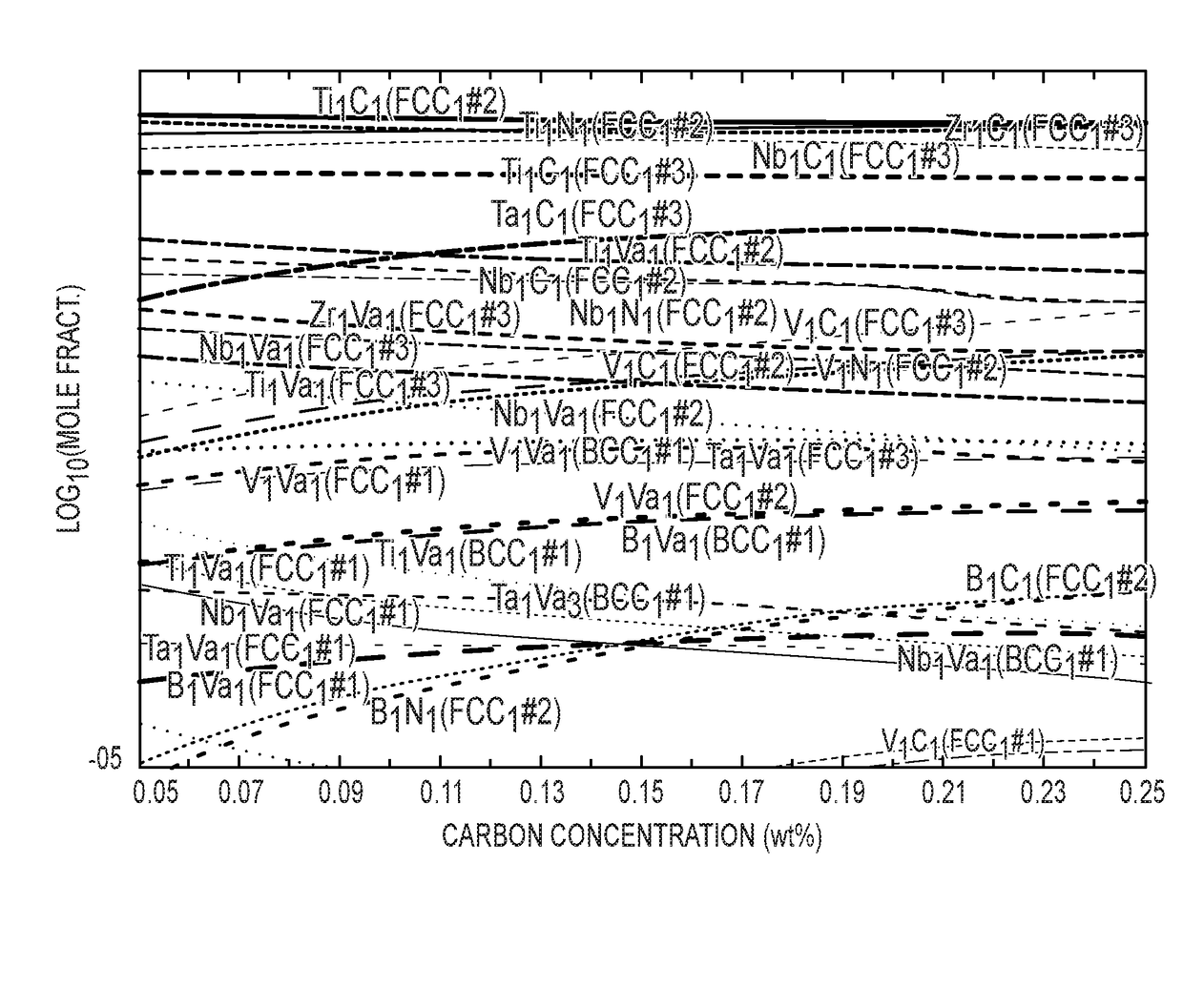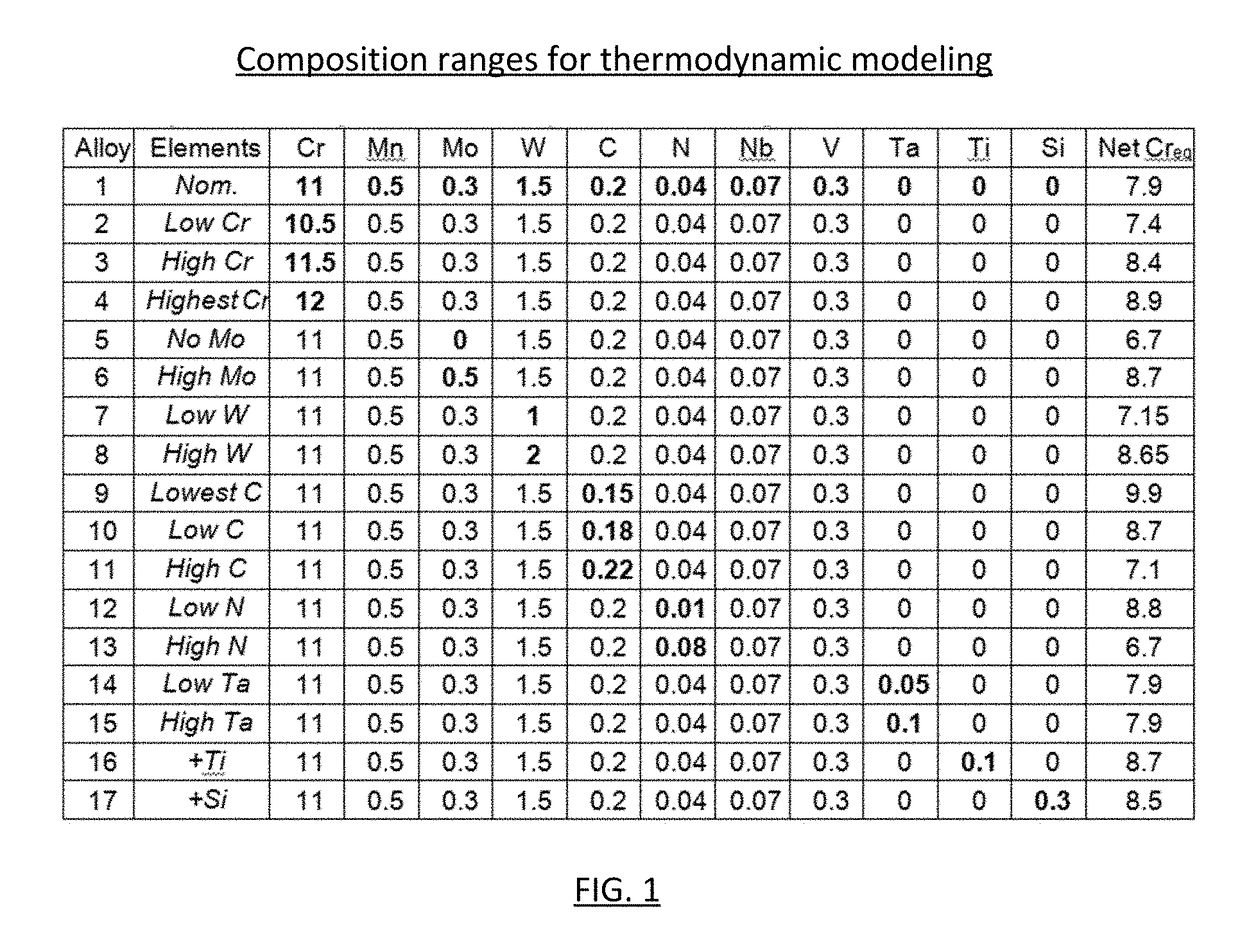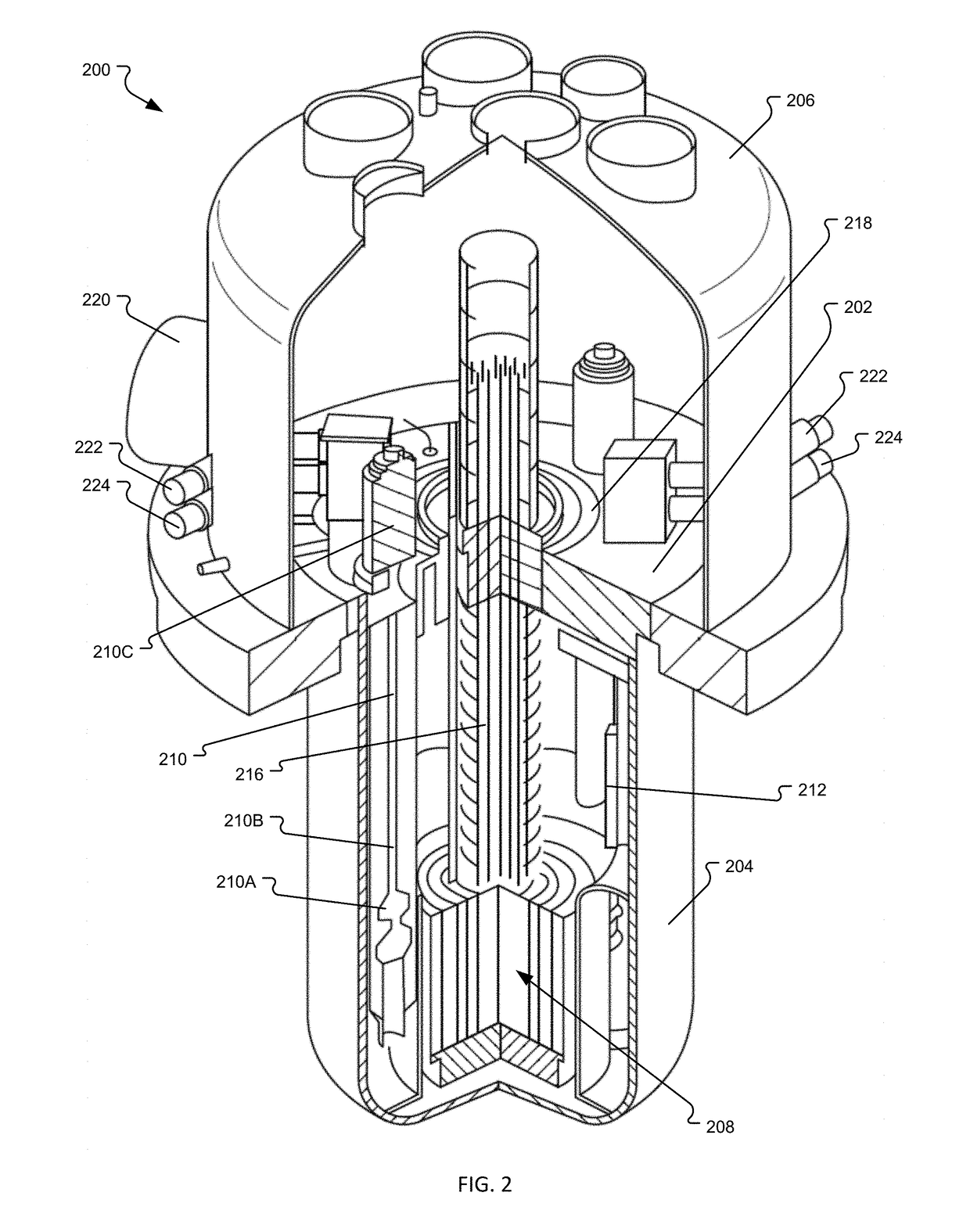High temperature, radiation-resistant, ferritic-martensitic steels
a technology of ferritic steel and radiation resistance, which is applied in the direction of nuclear engineering, machines/engines, nuclear elements, etc., can solve the problems of few becoming commercially viabl
- Summary
- Abstract
- Description
- Claims
- Application Information
AI Technical Summary
Benefits of technology
Problems solved by technology
Method used
Image
Examples
examples
[0036]The steel embodiments described above were selected based on a thermodynamic analysis of a range of initial steels of various compositions. The initial steels subjected to analysis are presented in FIG. 1. The initial steels were analyzed to examine each element's effect on such properties as carbonitride structure and stability, grain structure, secondary phase formation, impact toughness, and creep strength. The steel embodiments described above were identified based on the analysis as particularly suitable to use in high temperature, high radiation environments, such as for components in the traveling wave reactor of FIG. 2, which is described in greater detail below.
[0037]Based on the results of the thermodynamic analysis, the compositions listed in FIG. 3 were then selected for further study of the precipitate phases. Changes in precipitate phases were explored as a function of both carbon concentration and also nitrogen concentration. FIGS. 4A and 4B are sample results f...
PUM
| Property | Measurement | Unit |
|---|---|---|
| temperatures | aaaaa | aaaaa |
| temperatures | aaaaa | aaaaa |
| temperatures | aaaaa | aaaaa |
Abstract
Description
Claims
Application Information
 Login to View More
Login to View More - R&D
- Intellectual Property
- Life Sciences
- Materials
- Tech Scout
- Unparalleled Data Quality
- Higher Quality Content
- 60% Fewer Hallucinations
Browse by: Latest US Patents, China's latest patents, Technical Efficacy Thesaurus, Application Domain, Technology Topic, Popular Technical Reports.
© 2025 PatSnap. All rights reserved.Legal|Privacy policy|Modern Slavery Act Transparency Statement|Sitemap|About US| Contact US: help@patsnap.com



